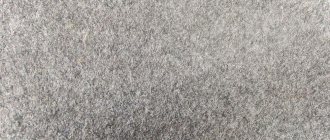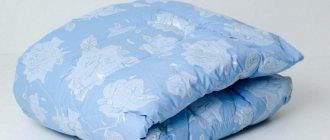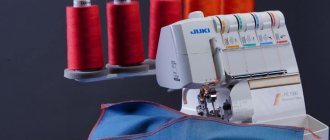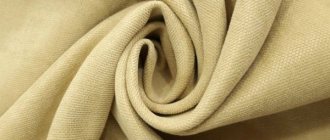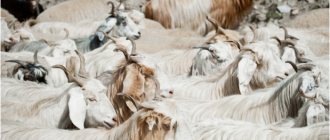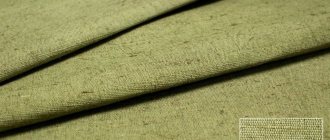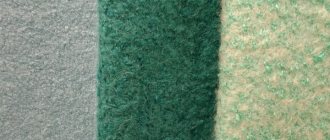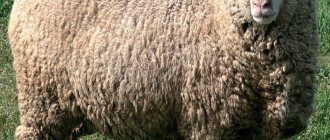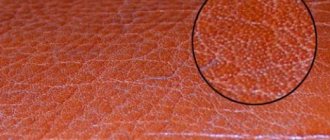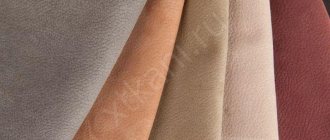“How to wash synthetic fabric from sweat and dust, how to remove stains of various origins from it, how to iron synthetic products?” – this article will answer these and other questions for users.
Active production of synthetic fabric and products made from it began in the 40s of the last century, and today products made from artificial materials are quite in demand. Casual clothes and bed linen, curtains and bedspreads, napkins and tablecloths, workwear, etc. are made from synthetics. The significant advantages of synthetics are low cost, good strength, resistance to wear and tear, a variety of colors, durability and easy maintenance.
Silk, Cashmere
Silk with elastane, printed silk with a bright pattern, fabrics with a silk content of more than 15% and fabrics with cashmere.
Silk and cashmere fabrics are not recommended to be washed or bleached, and tumble drying is prohibited.
The product should be ironed at a temperature no higher than 110°, without steam.
Professional dry cleaning can be carried out as normal in tetrachlorethylene and all solvents listed under symbol F.
100% silk and silk-blend fabrics - linen, cotton, if the manufacturer allows washing (silk, chiffon items for everyday wear, non-glued items - blouses, tops, dresses)
Fabrics containing silk should be washed at a temperature not exceeding 30° on a delicate cycle.
Do not bleach the fabric, tumble drying is prohibited.
It is advisable to iron the product at a temperature no higher than 110°, without steam.
Dry cleaning is prohibited; professional wet cleaning is carried out in a delicate mode.
How to properly care for fabrics
How often do you spoil your things? Agree that everyone has had unpleasant moments due to improper care of things. Either your favorite blouse will turn into clothes for dolls after washing, or your trousers will suddenly become shorter and stop fastening, or the most beautiful dress will have an iron mark on it. To prevent such oddities from happening, it is important to be able to properly care for things; for this you do not need to know the brand or country of manufacture, the main thing here is the composition of the fabric.
It's no secret that any fabric consists of fibers. Fibers, in turn, can be either natural, plant or animal origin, or chemical. Plant fibers are cotton and flax. Animals are wool and silk. Chemical fibers are divided into two groups: cellulose (viscose, acetate, triacetate) and synthetic (polyester, polyamide, polyacrylic, etc.).
HOW TO DETERMINE FABRIC COMPOSITION
Determining the composition of fabrics is a very important process, which will subsequently affect how you handle the fabric during sewing, care, ironing, etc.
So, to determine what fibers the fabric consists of, you need to follow fairly simple instructions:
Take a piece of fabric no longer than 5 cm with tweezers and hold it over the flame. As soon as the fabric catches fire, immediately place it in a fireproof container, and now just watch how it behaves during the combustion process.
If a piece of fabric burns quickly, with a flame, and you smell the smell of burnt paper, you should know that these are natural fibers of plant origin, such as cotton, linen or viscose. If the piece burns slowly, without a flame, and you smell the smell of burnt hair, then you are looking at natural fibers of animal origin (wool or silk).
Synthetic fibers (polyester, microfiber, etc. - made from petrochemical products) when burned simply melt without a flame, and instead of ash you will see a solid ball. And if such a piece is thrown into a simple nail polish solvent, and the fibers are destroyed, then this means that you have acetate fiber (from cellulose).
HOW TO PROPERLY CARE FOR FABRICS
In order to properly care for the fabric, you need to know the composition of the fabric in percentage terms and determine which fibers there are more in the composition. In good professional fabric stores, information about the composition is indicated on the price tag; in accordance with this information, sales consultants give competent care recommendations.
Cotton is durable, comfortable to wear and heat resistant. Cotton fabrics are particularly hygroscopic; they absorb a lot of moisture without becoming damp.
Sewing: When combined with fabrics made from other fibers, cotton fabrics need to be washed and ironed.
Washing: Non-colored cotton can be washed at 95 degrees, colored cotton at 40 degrees, in a washing machine. Universal washing powder is suitable for white cotton fabrics; it is better to wash colored ones with powder for fine fabrics or without brightener.
Drying and ironing: Finished cotton fabric, after washing, without squeezing, should be hung to dry, and then ironed in the “Wool” mode. It is better to iron other cotton fabrics while they are not completely dry. It is better not to dry cotton in the dryer, as it can shrink a lot.
Linen is a fabric with a very smooth surface and a matte sheen. Practically does not become dirty and does not crumble on cuts. Very hygroscopic fabric, so it is ideal for wearing in hot, humid weather. Easily absorbs moisture and dries quickly. Linen fabrics are very durable, so clothes made from linen will last you for many years. However, linen wrinkles, but not as much as cotton.
Washing: Linen fabrics tolerate boiling well. But if linen is dyed, then it should be washed at 60 degrees. It is better to wash finished fabric at a temperature of 40 degrees with a gentle cycle. It is better to use powder for fine fabrics without bleaches, including white linen.
Wool – woolen fabrics get dirty a little and hardly wrinkle. Odors of sweat, food and smoke quickly disappear from such fabrics. Wool dries slowly because the surface of the fabric repels water droplets but absorbs moisture in the form of steam. But woolen fabrics retain heat well.
Washing: You can wash wool only by hand, using powder for thin or woolen fabrics. The maximum water temperature should not exceed 30 degrees. It is recommended to wash wool in plenty of water, never rub or twist.
Drying and ironing: a freshly washed woolen item should be rolled up in a terry towel and laid out horizontally until completely dry. Forget about drying in a dryer or using radiators. As for ironing, you need to iron wool in a special “wool” mode, with moisture or through a damp cloth.
Silk is a delicate and light fabric. Clothes made of silk are pleasing in any weather; they warm in the cold and do not heat up in the heat. Silk fabric quickly evaporates moisture from the surface of the skin without becoming wet to the touch. But sweat can cause stains on the fabric, which will affect the strength of the silk over time.
Sewing: to make a silk item last longer, sew bias tape with rounded ends to the garment at the bottom of the sleeve cuff as armpits. This will save the fabric from being affected by sweat stains.
Washing: Taffeta, silk brocade, silk chiffon, silk organza, silk satin and silk crepe georgette items should be dry cleaned. When washed, any silk fades a lot. It can only be washed by hand at 30 degrees with soft washing powder. Silk should not be rubbed, squeezed or twisted. It is recommended to rinse the silk well, first in warm, then in cold water. You can add a little vinegar to cold rinse water to refresh the colors of the silk.
Drying and ironing: And again, no drying devices, heating devices or even sun! A damp silk product should be carefully wrapped in fabric, lightly wrung out and hung or laid out horizontally. Silk should be ironed with a moderately heated iron, preferably in the “silk” mode, and only from the wrong side. By the way, it is recommended to iron silk slightly damp, excluding tussock (wild silk), it is better to iron it after it has completely dried. It is not recommended to spray silk with water when ironing, as this may lead to the formation of streaks.
Viscose is a natural fiber obtained by chemical means. Viscose fabric is cellulose, without any impurities. Viscose is usually given the appearance of silk, cotton, wool, or linen due to the shiny or matte surface, thickness and crimp of the fibers. Viscose is not as durable as say cotton, but it absorbs moisture better.
Washing: in a washing machine or by hand, at your discretion, but always in a gentle cycle with a temperature no higher than 40 degrees. When washing viscose, it is better to use washing powder for delicate fabrics. Viscose cannot be rubbed, twisted or wrung out in a centrifuge.
Drying and ironing: It is recommended to gently wring out this fabric, hang it to dry without wringing it out at all, or roll it up in a sheet. When caring for viscose, you also need to forget about drying devices. It is best to iron viscose in the “silk” mode, in a damp state or through a damp cloth.
Acetate and triacetate - such fabrics consist of cellulose acetate, have a slightly shiny surface and look like natural silk. They hardly wrinkle and keep their shape very well. However, these fabrics do not have good hygroscopicity, they do not absorb moisture well, and melt when heated at high temperatures. But they are often used for pleating.
Wash: by hand or in the machine at a temperature of 30 degrees, always on a gentle cycle.
Drying and ironing: To dry such fabrics, you need to hang them, and again avoid drying devices. But they dry quickly and require almost no ironing. If you still decide to iron such fabric, then you need to do this through an ironing iron with a warm iron. Triacetate silk can be ironed in the wool/silk setting.
Elastane – popularly known as “lycra”. It is a highly stretchable fiber and is rarely used in its pure form; it is usually added to other fibers. Due to elastane, the fabric becomes elastic and does not wrinkle. Plus, elastane is a very durable fiber.
Wash: by hand or machine - the choice is yours, but best with powder for delicate fabrics.
Drying and ironing: dry using standard methods, excluding drying devices. This fabric does not need ironing.
Microfiber is a very dense fiber that is impervious to wind and rain. They produce microfiber and polyester fibers that are much finer than silkworm threads. Despite their density, these fibers allow perspiration to pass through, that is, they promote skin breathing. They do not absorb moisture, allowing it to pass out. Clothes made from microfiber fabric are always dry on the inside.
Washing: No special handling is required here. You can wash it in a machine, trying not to exceed the temperature above 40 degrees, and it is advisable not to spin it in a centrifuge. It is important that when rinsing microfiber fabrics, do not add softening agents to the water. Otherwise, they will lose their water-repellent properties.
Drying and Ironing: Hang to dry while wet and can be ironed on the silk setting.
Polyester - also made from polyester fibers. Very durable and soft. It holds its shape when heated and is also perfect for pleating. It practically does not wrinkle and, what is important, is not affected by moths.
Wash – in a washing machine at 40 degrees. If you exceed the water temperature, wrinkled folds will form on the fabric, which are almost impossible to smooth out.
Drying and ironing: dries quickly and does not require ironing. But if you want to iron polyester, do it with a warm iron in the “silk” mode, through a damp cloth.
Polyamide - lasts almost forever. The strongest fiber with respect to tearing and abrasion. The most famous are nylon fabrics.
Washing: You can wash it in a machine, trying not to exceed the temperature above 40 degrees, and it is advisable not to spin it in a centrifuge.
Drying and Ironing: Hang to dry while damp and can be ironed on the lowest heat setting, no steam.
Polyacrylic - feels very much like wool. However, caring for such fabrics is the same as microfiber. However, when washing, the water temperature should not exceed 30 degrees.
.
Knitted fabrics (if they can be washed)
If washing is allowed, then knitwear should be washed separately, on a delicate cycle, at a temperature of no more than 40°, without pre-soaking.
The fabric should not be bleached or tumble dried.
Knitwear should be dried on the surface without squeezing it first.
Iron at a temperature not exceeding 110°, without steam.
Professional dry cleaning can be carried out as normal in tetrachlorethylene and all solvents listed under symbol F.
Artificial materials (polyester)
Polyester is the name of one of the most popular and diverse synthetic polyester fibers. This is a very durable, heat-resistant material.
Using the “false twist” method, high-volume yarn is obtained; the textile thread is used to make knitwear and fabrics such as taffeta, crepe, etc. Staple polyester fiber is used in a mixture with wool, cotton or linen, thus creating suits, coats, shirts, dresses and other fabrics. In pure or mixed form, polyester fibers are used to produce artificial fur.
When caring for polyester, it is worth considering that the washing temperature should not exceed 40 degrees (in a washing machine with mild detergents). In case of overheating, folds may appear on the fabric that can no longer be removed, and when treated with steam at about 100 degrees, a decrease in the strength of the fiber is observed.
Polyester fabrics are not as resistant to abrasion, the same applies to resistance to repeated “creasing”, so in no case should they be wrung out in a centrifuge.
Decatation
This is often done by a tailor if you are sewing to order. If you sew yourself, you need to prepare the fabric for cutting. In the process of decating, you need to do the same thing with the fabric before cutting that you will then do with the product. If the product will be washed, the fabric must be washed; if the product will be dry cleaned, the piece of fabric must be taken there. During the decating process, the fabric undergoes its first shrinkage and the color is fixed. Decating also removes warehouse dust from the fabric, which, even minimally, still gets into the structure of the fabric. As a result, you have in front of you a clean, ready-to-sew fabric that will no longer bring any unpleasant surprises)) Working with it is a pleasure! Sizing and cushioning materials and insulation, as well as some types of additional materials (trouser tape, bias tape, etc.) must also be decatified! Additional materials are usually simply ironed with steam. When decating the sizing material, it is important to steam the fabric so as not to disturb the adhesive layer. Hang the cut straight out in a damp place (for example, in the bathroom), pre-moisten it with a spray bottle. It is best to hang it above the bathtub with some warm water in it. Let the fabric hang like this for some time and soak in damp heat - an hour is enough for thin fabric, overnight - for thick duplerin, for example, collar. Then air dry the fabric.
Washing features
Clothes made from artificial fibers have many advantages:
- practicality to wear;
- low creasing;
- bright color;
- a wide selection of synthetic fabrics in density, texture and appearance;
- durability.
In addition, synthetics can be included in mixed materials, providing things with better performance. The exact composition and care conditions for items made from artificial fabrics can be found on the label.
The widespread use of synthetic materials makes it necessary to know the rules for caring for them.
For synthetics
there are a number of washing restrictions:
- inadmissibility of high temperatures to avoid deformation;
- It is undesirable to use a spin cycle at the end of the wash, as this may cause creases;
- inadmissibility of intense friction and other similar influences, including active spinning.
Pre-soaking synthetics for a short time will help to wash things better.
Ironing
Ironing is one of the most important and necessary steps in caring for fabric and products. With proper ironing or steaming, you can delay the next cleaning. For example, this applies to products made from suit wool and coats. Steaming in this case raises the pile (or micropile) and partially removes contaminants from the fabric structure, and cleaning occurs. If the fabric has a voluminous texture or volume (for example, knitted jersey), you need to iron it without pressure or even at a distance of 2-3 centimeters from the surface. This applies to any type of fabric. Always iron fabrics in one layer. A great way is to use a vertical steamer. Hang the product/fabric on a mannequin or hanger and use a steamer. If you steam a product at home, without special tailoring equipment (pads), and you need to steam hard-to-reach places (for example, the side under a sleeve, etc.) and small parts (for example, pocket flaps, places of relief darts, etc.), use a special heat-resistant glove. They are sold in hardware and sewing stores and are very convenient to use. If the fabric is embroidered with beads, sequins, beads, etc. - use a steamer. Use steam at a distance of several centimeters so that the folds on the base are straightened out, but the beads and sequins, especially plastic ones, do not melt. Yes, this can really happen) Another important note regarding embroidered fabrics - glass beads and seed beads can scratch the surface of the iron.
Life hack
How to iron so that no stripes remain? There are two ways, and here you can choose the one that is more convenient for you. The first is to use a Teflon attachment on the sole of the iron, the second is to use an iron - a piece of fabric, usually clean white calico or gauze, through which you will iron. When you use a vertical steamer, the appearance of lass is eliminated. When ironing synthetic knitted fabrics, use a special ironing mesh to avoid any laces remaining. It is sold in hardware and sewing stores.
The thing has faded: how to return it to its previous appearance?
Sorting items before washing and processing them in compliance with all rules allows you to avoid shedding . Removing paint while maintaining the color of the item itself is not an easy task.
Many synthetic items are prone to shedding. Compliance with washing standards for artificial materials will help prevent the transfer of paints, in particular, not exceeding the heating temperature of the water during processing.
A new item, even before the first wash, can be washed in a solution that fixes the paints. To do this, add 1 tbsp to a bowl of water. l. vinegar and salt. It is enough to keep the product in the solution for a quarter of an hour to prevent the dyes from quickly washing out.
The first thing to do when molting is detected is re-treatment . It can be effective while things are wet. At the same time, it is necessary to sort them so that the paint washes off and the situation does not worsen even more. The water temperature for re-washing should be within the same range as during the initial wash.
To maintain the color of clothes that fade, a special product can be used that allows you to return the lost shade. For example, from - “The Magic of Color”. The use of stain removers is only possible if they are approved for use on synthetics.
